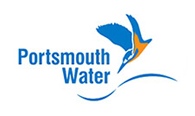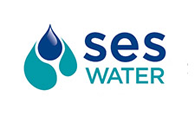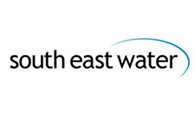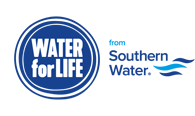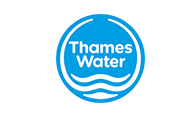Activity in your area
Managing water resources is a task that affects everyone in the region and we're passionate about getting customers and businesses involved in the planning. Have a look at the map below to see what's going on near you and how you can help plan our futures.
Affinity Water
Central region:
Before 2025 Affinity Water plans to:
- Work with Thames Water to develop plans for a new reservoir in Oxfordshire – the South East Strategic Reservoir – which will provide an extra 50 million litres a day of water by the end of the 2030s – with the intention of fully utilising 100 million litres a day of the reservoir’s capacity through staged network and water treatment developments.
- Work with Severn Trent Water and the Canal & River Trust to investigate the feasibility of transferring water from the West Midlands to Hertfordshire and North West London via the Grand Union Canal. This could provide between 50 to 100 million litres a day of water.
- Continue to develop alternative solutions to transfer water from a new reservoir in South Lincolnshire which could provide up to 100 million litres of water a day in the longer run.
- Reduce water leaks by 15% by 2025 across the company’s supply area which would increase supplies of water by around 11%.
- Help customers reduce water usage from 152 litres per person per day to 129 litres per person per day by 2025 across the company’s supply area. This will be achieved by installing more waters meters into homes and businesses, providing customers with more information on their usage, and offering water efficiency audits.
- Support national water efficiency efforts and work with the government on introducing new policies that promote less water usage.
East region:
What are their specific plans?
Before 2025 Affinity Water plans to:
- Reduce water leaks by 15% by 2025 across the company’s supply area. This would increase supplies of water by around 11%.
- Help customers reduce water usage from 152 litres per person per day to 129 litres per person per day by 2025 across the company’s supply area. This will be achieved by installing more waters meters into homes and businesses, providing customers with more information on their usage, and offering water efficiency audits.
- Address the potential reduction in water abstraction in the River Brett catchment area. Alternative solutions could include a desalination plant on the East coast.
- Support national water efficiency efforts and work with the government on introducing new policies that promote less water usage.
Central Region:
To meet future demand in this area, Affinity Water is focusing on both reducing water usage in the area and increasing the amount of water available. It is also putting plans in place to protect local habitats – namely by reducing the reliance on water that is found in rare chalk streams and the amount of water taken from other chalk sources. Affinity Water is also collaborating with other water companies and third parties to secure the additional supplies that the area will need in the future, by looking at regional strategic infrastructure solutions and how water can be better moved about to get it to where it’s needed most.
East Region:
The East region is covered under the Water Resources East Regional Plan. To meet future demand in this area, Affinity Water is focused on reducing water usage. In addition, as part of its plans looking to protect local habitats it is reducing the reliance on water that is found in rare chalk streams and reducing the amount taken from chalk sources. Affinity Water is also collaborating with other water companies and third parties to secure the additional supplies of water the area will need in the future.
Affinity Water
Before 2025 Affinity Water plans to:
- Reduce water leaks by 15% by 2025 across the company’s supply area. This would increase supplies by around 11%.
- Help customers reduce water usage from 152 litres per person per day to 129 litres per person per day by 2025 across the company’s supply area. This will be achieved by installing more waters meters into homes and businesses, providing customers with more information on their usage, and offering water efficiency audits.
- Support national water efficiency efforts and work with the government on introducing new policies that promote less water usage.
To meet future demand in this area, Affinity Water is focusing on both reducing water usage and increasing the available supply in the area. It is also putting plans in place to protect local habitats by reducing the reliance on water that is found in rare chalk streams and the amount taken from other chalk sources. Affinity Water is also collaborating with other water companies and third parties to secure the additional supplies that the area will need in the future.
Sutton & East Surrey Water
Before 2025 SES Water plans to:
- Reduce leaks by 15%. This mostly means replacing older water mains and introducing new technology to find and fix pipework leaks and improve pressure (to reduce the chances of leaks and bursts happening again). It also involves helping customers find leaks on the pipes that serve their homes.
- Reduce household water use by 7.2% to 134 litres a day. Metering 90% of homes will help customers understand water usage and take control of their bills and reduce demand – with a focus on affordable water for all. It aims to install smart metersin at least 10% of homes to provide near real-time consumption data to help customers cut usage, pinpoint leaks and other wastage (think dripping taps and leaky loos). It is also planning household visits to help high users or those with financial concerns, offering practical advice and fit water efficient devices.
SES Water’s activities are focused on managing water demand in the area. It has ambitious plans to reduce leaks and household water use in order to maintain the current surplus of water that it has in the area, right through to 2080. That is why it doesn’t need to develop any new resources. In fact, it is looking at whether it can supply neighbouring companies with some of this surplus water to improve the overall resilience of water supplies in the wider South East.
South East Water
Before 2025 South East Water plans to:
- Reduce leaks by 15%
- Promote efficient water use by helping customers track their water use and running awareness campaigns in schools for example.
- Investigate additional water supply options in the area, including catchment management of the existing groundwater source in Pembury. The plans are to remediate areas of contaminated land that impact water quality, educate farmers and land managers about pesticide management and chemical storage, and stop fly-tipping.
In the short term, South East Water is focused on lowering the area’s demand for water. It aims to reduce water leaks by 15% by 2025. While the area’s water supply is already quite resilient to droughts, more serious droughts will still reduce the available water supplies. So longer term, South East Water is looking at improving the region’s supply options – through catchment management at a groundwater site in Pembury and improving connectivity in the local water mains network.
South East Water
Before 2025 South East Water plans to:
- Reduce leaks by 15%.
- Promote efficient water use by helping customers track their water use and running awareness campaigns, in schools for example.
- Investigate additional water supply options through improving the existing water treatment plant at Bewl (increasing the water supply that can be drawn on) and importing around 9 million litres a day from a neighbouring water company, SES Water.
In the short term, South East Water is focused on lowering the area’s demand for water. It aims to reduce water leaks by 15% by 2025. While the area’s water supply is already quite resilient to droughts, more serious drought situations will reduce the available water supplies. So longer term, South East Water is looking at ways to draw on existing water sources from other parts of its supply area should it be needed.
South East Water
Before 2025 South East Water plans to:
- Reduce leaks by 15%.
- Promote efficient water use by helping customers track their water use and running awareness campaigns in schools for example.
- Make improvements to the existing water treatment plant at Bewl so any excess supply can be transferred to the Eastbourne area if needed.
- Develop a second new reservoir at Arlington.
- Improve pipework connectivity across the area to support other developments.
In the short term, South East Water is focused on lowering the area’s demand for water. It aims to reduce water leaks by 15% by 2025. While the area’s water supply is already quite resilient to droughts, more serious drought situations will reduce the available water supplies. So longer term, South East Water is looking at potential new sources which include a second new reservoir at Arlington, East Sussex.
South East Water
Before 2025 South East Water plans to:
- Reduce leaks by 15%.
- Promote efficient water use by helping customers track their water use and awareness campaigns, in schools for example.
- Improve water quality and maintain the current supply at the Woodgarston Water Treatment Works. Activities will include working with landowners to manage septic tank/cess pit discharges, and with farmers and land managers on Nitrate Vulnerable Zone Regulations and best practice nutrient management.
- Temporarily reduce the existing Egham to Surrey Hills water transfer agreement. Given that the area currently has a short-term surplus, up to 10 million more litres a day could be shared with neighbouring company, Affinity Water.
In the short term, South East Water is focused on lowering the area’s demand for water. It aims to reduce water leaks by 15% by 2025. While the area’s water supply is already quite resilient to droughts, more serious drought situations will clearly reduce the available water supplies. So longer term, South East Water is looking at maintaining water supplies from an existing treatment plant while also looking to help neighbouring areas that have more imminent water needs.
South East Water
Before 2025 South East plans to:
- Reduce leaks by 15%.
- Promote efficient water use by helping customers track their water use and awareness campaigns, in schools for example.
South East Water is focused on lowering the area’s demand for water. It aims to reduce water leaks by 15% by 2025 and promote water efficiency.
South East Water
Before 2025 South East Water plans to:
- Reduce leaks by 15%.
- Promote efficient water use by helping customers track their water use and awareness campaigns, in schools for example.
- Undertake a third party abstraction licence trade and construct a new water treatment plant at the former Aylesford Newsprint site to provide an additional 18.2 million litres a day – with the future potential to transfer this extra water to other parts of the region that need it.
In the short term, South East Water is focused on lowering the area’s demand for water. It aims to reduce water leaks by 15% by 2025. While the area’s water supply is already quite resilient to droughts, more serious drought situations will reduce the available water supplies. So longer term, South East Water is looking at improving the region’s supply options – specifically by undertaking a third-party abstraction licence trade and building a new water treatment plant at the former Aylesford Newsprint site.
South East Water
Before 2025 South East Water plans to:
- Reduce leaks by 15%.
- Promote efficient water use by helping customers track their water use and awareness campaigns in schools for example.
- Investigate improving pipework connections with the Tunbridge Wells area.
In the short term, South East Water is focused on lowering the area’s demand for water. It aims to reduce water leaks by 15% by 2025. While the area’s water supply is already quite resilient to droughts, more serious drought situations will reduce the available water supplies. So longer term, South East Water is looking at improving the region’s supply options by improving pipework connections.
South East Water
Before 2025 South East Water plans to:
- Reduce leaks by 15%.
- Promote efficient water use by helping customers track their water use and awareness campaigns in schools for example.
- Supply neighbouring water company Southern Water with two million litres a day from the Kingston Water Treatment Works – and improve pipework connections in the neighbouring Southern Water region to allow this to continue.
- Investigate new water supply options in the area such as building a new reservoir at Broad Oak, Kent, to increase supply by 19.6 million litres a day.
In the short term, South East Water is focused on lowering the area’s demand for water. It aims to reduce water leaks by 15% by 2025. While the area’s water supply is already quite resilient to droughts, more serious drought situations will reduce the available water supplies. So longer term, South East Water is looking at potential new sources such as a reservoir at Broad Oak, Kent, and improving water supply connections with other areas.
Southern Water
Before 2025 Southern Water plans to:
- Increase the number of homes with meters from 88% to 92% to encourage savings and find more leaks.
- Reduce leaks more generally across the network.
- Receive an extra 9 million litres of water a day from Portsmouth Water through an existing pipeline – and longer term, potentially receive more water as a result of Portsmouth Water building the new Havant Thicket Reservoir.
- Remove nitrates and protect against nitrates and pesticides at six water sources in Hampshire and the Isle of Wight.
- Improve the resilience of the Test and Itchen rivers to drought events
- Apply for drought permits and orders on the Test and Itchen rivers and on the Candover Stream – enabling continued water abstraction during dry periods.
- Progress plans for a major new resource in Hampshire – either a desalination plant on the Solent or a water recycling scheme on the River Itchen
- Progress plans for a new resource on the Isle of Wight – a water recycling scheme at Sandown
- Progress plans for a new transfer of water from South West Water
- Begin installing a network of pipes to move water between different supply zones.
Southern Water is focused on reducing water usage in the area, protecting existing water resources and increasing the available supply of water. Its long-term aim (by 2040) is to reduce personal water use to 100 litres per person per day. This means working with customers and helping them save water – reading water meters every month, helping customers track use, and finding leaks quicker. Southern Water is also looking at increasing supply by progressing plans for new water resources in Hampshire and the Isle of Wight as well as working with neighbouring water companies to ensure water supplies can keep up with demand.
Southern Water
Before 2025 Southern Water plans to:
- Increase the number of homes with meters from 88% to 92% to encourage savings and find more leaks.
- Reduce leaks more generally across the network.
- Protect against nitrates and pesticides at nine water sources in Brighton and Worthing and a river and reservoir in North Sussex.
- Refurbish a groundwater source and water supply works in North Sussex.
- Apply for drought orders and permits on the River Western Rother and Weir Wood Reservoir in North Sussex, two groundwater sources in the Brighton and Worthing zones, and the Powdermill Reservoir in the Hastings zone – to continue to be able to extract water during dry periods.
- Progress plans for a major new resource in North Sussex – a water recycling scheme
- Progress plans for a major new resource near Brighton – a desalination plant.
Southern Water is focused on reducing water usage in the area, protecting existing water resources and increasing the available water supply. Its long-term aim (by 2040) is to reduce personal water use to 100 litres per person per day. This means working with customers and helping them save water – reading water meters every month, helping customers track use, and finding leaks quicker. Southern Water is also looking at improving water supply and drought resilience in the area – upgrading the pipeline network and increasing access to certain water sources.
Southern Water
Before 2025 Southern Water plans to:
- Increase the number of homes with meters from 88% to 92% to encourage savings and find more leaks.
- Reduce leaks more generally across the network.
- Receive an extra 9 million litres of water a day from Portsmouth Water through an existing pipeline – and longer term, potentially receive more water as a result of Portsmouth Water building the new Havant Thicket Reservoir.
- Remove nitrates and protect against nitrates and pesticides at six water sources in Hampshire and the Isle of Wight.
- Improve the resilience of the Test and Itchen rivers to drought events
- Apply for drought permits and orders on the Test and Itchen rivers and on the Candover Stream – enabling continued water abstraction during dry periods.
- Progress plans for a major new resource in Hampshire – either a desalination plant on the Solent or a water recycling scheme on the River Itchen
- Progress plans for a new resource on the Isle of Wight – a water recycling scheme at Sandown
- Progress plans for a new transfer of water from South West Water
- Begin installing a network of pipes to move water between different supply zones.
Southern Water is focused on reducing water usage in the area, protecting existing water resources and increasing the available supply of water. Its long-term aim (by 2040) is to reduce personal water use to 100 litres per person per day. This means working with customers and helping them save water – reading water meters every month, helping customers track use, and finding leaks quicker. Southern Water is also looking at increasing supply by progressing plans for new water resources in Hampshire and the Isle of Wight as well as working with neighbouring water companies to ensure water supplies can keep up with demand.
Southern Water
Before 2025 Southern Water plans to:
- Increase the number of homes with meters from 88% to 92% to encourage savings and find more leaks.
- Reduce leaks more generally across the network.
- Protect against nitrates and pesticides at nine water sources in Brighton and Worthing and a river and reservoir in North Sussex.
- Refurbish a groundwater source and water supply works in North Sussex.
- Apply for drought orders and permits on the River Western Rother and Weir Wood Reservoir in North Sussex, two groundwater sources in the Brighton and Worthing zones, and the Powdermill Reservoir in the Hastings zone – to continue to be able to extract water during dry periods.
- Progress plans for a major new resource in North Sussex – a water recycling scheme
- Progress plans for a major new resource near Brighton – a desalination plant.
Southern Water is focused on reducing water usage in the area, protecting existing water resources and increasing the available water supply. Its long-term aim (by 2040) is to reduce personal water use to 100 litres per person per day. This means working with customers and helping them save water – reading water meters every month, helping customers track use and finding leaks quicker. Southern Water is also looking at improving water supply and drought resilience in the area, by upgrading the pipeline network and increasing access to certain water sources.
Southern Water
Before 2025 Southern Water plans to:
- Reduce leaks across the network.
- Protect against nitrates and pesticides at fifteen water sources in the Thanet and Medway zones.
- Change the licence of two underground water sources so more water can be extracted when it’s available.
- Receive additional water from South East Water through a new pipeline that will increase the amount of water that can be shared.
- Apply for drought orders and permits on the River Medway and groundwater sources to enable them to continue to abstract water in dry weather.
- Progress plans for a major new resource in Medway – a water recycling scheme
Southern Water is focused on reducing water usage in the area, protecting existing water resources and increasing the available water supply. Its long-term aim (by 2040) is to reduce personal water use to 100 litres per person per day. This means working with customers and helping them save water – reading water meters every month, helping customers track use and finding leaks quicker. Southern Water is also looking at improving water supply and drought resilience in the area, by upgrading the pipeline network and increasing access to certain water sources.
Southern Water
Before 2025 Southern Water plans to:
- Increase the number of homes with meters from 88% to 92% to encourage savings and find more leaks.
- Reduce leaks more generally across the network.
- Protect against nitrates and pesticides at nine water sources in Brighton and Worthing and a river and reservoir in North Sussex.
- Refurbish a groundwater source and water supply works in North Sussex.
- Apply for drought orders and permits on the River Western Rother and Weir Wood Reservoir in North Sussex, two groundwater sources in the Brighton and Worthing zones, and the Powdermill Reservoir in the Hastings zone – to continue to be able to extract water during dry periods.
- Progress plans for a major new resource in North Sussex – a water recycling scheme
- Progress plans for a major new resource near Brighton – a desalination plant.
Southern Water is focused on reducing water usage in the area, protecting existing water resources and increasing the available water supply. Its long-term aim (by 2040) is to reduce personal water use to 100 litres per person per day. This means working with customers and helping them save water – reading water meters every month, helping customers track use, and finding leaks quicker. Southern Water is also looking at improving water supply and drought resilience in the area – upgrading the pipeline network and increasing access to certain water sources.
Thames Water
Before 2025 Thames Water plans to:
- Reduce water consumption by installing over 9,000 smart meters in homes.
- Reduce leaks by 2 million litres/day through a combination of activities including mending leaks on customer water pipes, managing pressure in the pipe network and mains replacement.
- Continue its free ‘Smarter Home Visits’ initiative which promotes water efficiency by visiting homes and showing customers ways to use water more wisely.
- Continue its ‘Leaky Loo’ repair initiative.
- Run awareness campaigns such as school visits.
- Make improvements tothe network at Ladymead which is planned to free up an extra 4.6 million litres/day.
To meet future demand for water Thames Water is currently working on reducing water usage in the area. This includes improving its own water pipes as well as working with customers – installing smart meters and helping people use water more efficiently through awareness campaigns. It will also improve the water pipe infrastructure to ensure supplies are resilient in the future.
Thames Water
Before 2025 Thames Water plans to:
- Reduce water leaks by 122 million litres through a combination of activities including managing pressure in the pipe network, mending leaks on its own water pipes and customers’ pipes and replacing the water mains.
- Promote water efficiency and helping customers use water wisely by installing over 350,000 smart meters – so around 60% of London’s homes will have a smart meter fitted by 2025 – and conducting around 50,000 ‘Leaky Loo’ repairs.
- Introduce a reward-based incentive scheme to promote the efficient use of water.
- Buy surplus water from Didcot Power Station to provide an extra 18 million litres/day.
- Improve the network by developing new groundwater sources and a new aquifer storage and recovery scheme – adding around 16 million litres/day.
In the longer term, Thames Water also has plans to develop a new reservoir, called the South East Strategic Reservoir in Oxfordshire in collaboration with Affinity Water – this is planned for completion in 2037/38. When operational this will help to relieve pressure on some vulnerable chalk streams and watercourses. Thames Water is also exploring other options such as water transfers from Wales, the Midlands and the North West of England and reusing treated wastewater for water supply.
Thames Water is focused on making the best use of its current water resources by reducing the amount of water lost through leaks from water pipes and supporting customers to use less water. This will involve repairing and replacing water pipes, some of which date back to the Victorian era, and working with customers by installing smart water meters and helping people to use water more efficiently. But these actions won’t be enough to meet future demand, and so it plans to increase the area’s water supply with a mix of schemes including water transfers, new groundwater sources, reuse of wastewater and a new reservoir. It is collaborating with other water companies and third parties to secure the additional supplies of water that the South East will need in the future.
Thames Water
Before 2025 Thames Water plans to:
- Work to reduce leaks through a combination of activities including mending leaks on its own water pipes and customers’ water pipes, managing pressure in the pipe network and replacing pipes.
- Promote awareness of ways customers can use water more efficiently.
In the longer term, Thames Water will also start to install smart meters in homes after 2030.
While Thames Water forecasts that the area will have sufficient water, it still has plans to reduce water usage. Not only will this help the area be more resilient during periods of drought but it will also help free up more water so it can transfer any surplus to other areas that need it. Its plans include awareness campaigns to help customers think about ways to use water more efficiently and – over the longer term – installing water meters.
Thames Water
What are their specific plans?
Before 2025 Thames Water plans to:
- Promote awareness of ways customers can use water more efficiently.
In the longer term, Thames Water will also start to install smart meters in homes after 2030.
While Thames Water forecasts that the area will have a sufficient water supply, it still has plans to reduce water usage. Not only will this help the area be more resilient during periods of drought but it will also help free up more water so it can transfer any surplus to other areas that need it. Its plans include awareness campaigns to help customers think about ways to use water more efficiently and – over the longer run – installing smart water meters.
Thames Water
Before 2025 Thames Water plans to:
- Work to reduce leaks through a combination of activities including mending leaks on its own water pipes and customers’ water pipes, managing pressure in the pipe network and replacing pipes.
- Promote awareness of ways customers can use water more efficiently.
In the longer term, Thames Water will start to install smart meters in homes after 2030. It is also looking at developing a new groundwater source at Datchet along with new pipelines to improve the transfer of water around the area.
While Thames Water forecasts that the area will have a surplus of water until around the mid-2030s, it still has plans to reduce water usage. Not only will this help the area be more resilient during periods of drought but it will also help free up more water so it can transfer any surplus to other areas that need it. Its activities include awareness campaigns to help customers think about ways to use water more efficiently and – over the longer term – installing smart water meters.
Thames Water
Before 2025 Thames Water plans to:
- Reduce water consumption by installing over 46,000 smart meters in homes.
- Reduce water leaks by around 10 million litres a day through a combination of activities including mending leaks on its own water pipes and customers’ water pipes, managing pressure in the pipe network and replacing pipes.
- Continue its free ‘Smarter Home Visits’ initiative which promotes water efficiency by visiting homes and showing customers ways to use water more wisely.
- Continue its ‘Leaky Loo’ repair initiative.
- Run awareness campaigns such as school visits
In the longer term, Thames Water also has plans to develop a new reservoir, called the South East Strategic Reservoir, in Oxfordshire in collaboration with Affinity Water – planned for completion in 2037/38.
To meet future demand for water Thames Water is currently working on reducing water usage in the area. This includes improving its own water pipes as well as working with customers – installing smart meters and helping people use water more efficiently through awareness campaigns. It will also develop new sources of water to be ready from 2037 to ensure greater resilience for customers’ water supplies and the environment.
Portsmouth Water
Before 2025 Portsmouth Water plans to:
- Reduce leaks by 20% by continuing to invest in a network of smart acoustic leak detection equipment.
- Save 3 million litres/day by helping its customers to reduce their personal water use (which includes the introduction of smart not-for-revenue metering).
- Increase the amount of water it can abstract and treat by around 20 million litres/day through improvements and enhancements at some existing groundwater abstraction sites.
- Develop a new water storage reservoir at Havant Thicket which it aims to complete by 2029. This is in order to share the area’s natural reserves of water – which are in a healthier state than other parts of the region – with neighbouring water companies.
Portsmouth Water is very much focused on ways to make the water already naturally available go much further. So, for example, it’s going to find and fix more leaks, do more to encourage greater water efficiency and get more water from existing groundwater sources. And by developing a new reservoir, it will also be able share more of its future water resources with neighbouring water companies.


